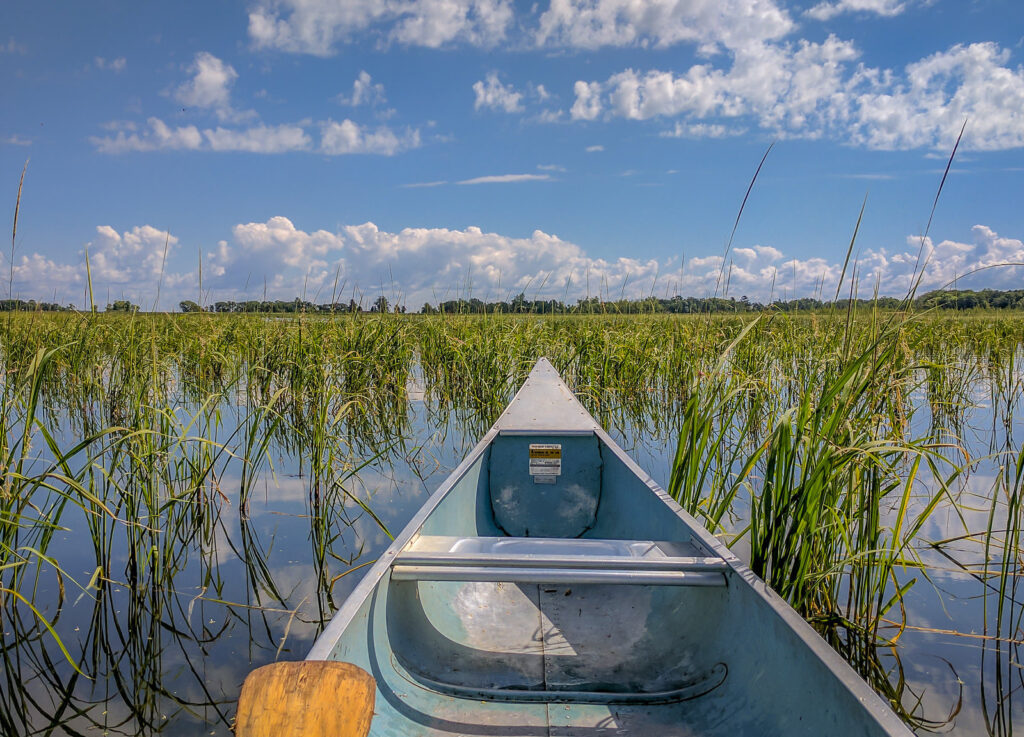
When the state of Minnesota submitted its list of impaired waters to the Environmental Protection Agency this winter, it included 5,700 lakes and rivers harmed by things like too much nutrients, E. coli bacteria, and mercury. But, it didn’t include any waters where wild rice was subjected to harmful sulfate. The agency said the state legislature had restricted its ability to do so.
Now, the EPA says the state must include those lakes. Because the MPCA is responsible for enforcing parts of the Clean Water Act, it is subject to federal oversight.
The Minnesota Chippewa Tribe, a coalition of individual bands in the state, commented that the decision to leave wild rice waters impaired by sulfates off the list was wrong.
“This is a political decision that ignores the requirements of the Clean Water Act, and it is a continuation of this agency’s ongoing refusal to protect an irreplaceable resource,” wrote the group’s president, Catherine Chavers.
The tribes referenced information from the 1854 Treaty Authority, which manages natural resources in parts of northeastern Minnesota which were ceded in treaties but over which Ojibwe people still have legal rights. They named Birch Lake, Embarrass River, Little Sandy Lake, Partridge River, Pike River, Sand River, Sandy Lake, and Second Creek as having high sulfate levels.
“The MPCA’s analysis of the eight waters suggested in the comments from Tribal leaders show that sulfate in seven of the waters exceed the 10 mg/L sulfate wild rice standard,” the agency explained when it drafted this year’s impaired waters list. “However, in 2015 the Minnesota Legislature adopted wild rice legislation (1st Special Session, Chapter 4, Article 4, Section 136) which says that the agency shall not list waters as impaired for the wild rice sulfate water quality standard. Therefore these waters were not included in the final impaired waters list submission.”
Sulfate is released by Minnesota’s traditional taconite mines, as well as from proposed sulfide-ore mines. The salty compound has been found to hurt wild rice growth, but the mining industry has sued and promoted legislation to overturn restrictions on the compound in discharges from tailings basin and other mine facilities.
The limit has rarely been enforced since being passed in the 1970s, raising objections from environmental advocates.
“EPA disapproves Minnesota’s decision not to identify certain [water quality limited segments (WQLSs) for sulfate impairment because the existing and readily available data and information for those WQLSs indicate impairments for the numeric water quality criterion for sulfate,” the federal agency wrote. “Minnesota’s decision to exclude these waters is inconsistent with CWA Section 303(d) and the implementing regulations.”
The MPCA assesses lakes and rivers in the state every two years for how well they support uses like drinking water, recreation, and wildlife habitat. But the state has been ensnared in a long-running conflict over wild rice and the sulfate that taconite mines release.
The EPA will next identify the specific wild rice waters affected by sulfate to be included on the impaired waters list. The list should be released later this month, with a 30-day public comment period to follow. That could initiate a process in which facilities would ultimately be required to reduce their sulfate discharges into wild rice waters.
More information
- EPA directs Minnesota to list waters impaired for wild rice – MinnPost
- Minnesota’s Impaired Waters List – Minnesota Pollution Control Agency

